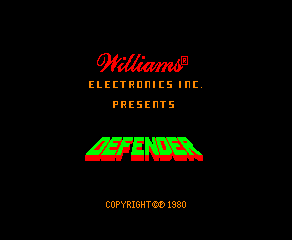Defender (Red label)
Game Information
| manufacturer | Williams |
| year | 1980 |
| cloned by | attackf defcmnd defence defenderb defenderg defenderj defenderom defenderw defenseb defndjeu galwars2 startrkd tornado1 tornado2 zero zero2 nextcent |
| genre | Shoot-'Em-Up |
| downloads | 936 |
Screenshots










Download Details
| split set | defender.zip 22.87k |
| merged set | defender.7z 53.28k |
| standalone set | defender.7z 19.45k |
| artwork | defender.zip 4.56m |
Driver Details
| source | midway/williams.cpp |
| status | good |
| emulation | good |
| savestate | supported |
Series Details
Screen Details
| display | screen |
| type | raster |
| orientation | horizontal |
| width | 292px |
| height | 240px |
| refresh | 60.1mhz |
Input Details
| player | 1 |
| type | joy |
| buttons | 5 |
| directions | vertical2 |
Chipset Details
| name | Motorola MC6809E |
| clock | 0.95mhz |
| name | Motorola MC6808 |
| clock | 3.41mhz |
| name | Speaker |
| clock | N/A |
| name | MC1408 DAC |
| clock | N/A |
ROM Details
| name | size | crc |
|---|---|---|
| defend.1 | 2.00k | c3e52d7e |
| defend.4 | 2.00k | 9a72348b |
| defend.2 | 4.00k | 89b75984 |
| defend.3 | 4.00k | 94f51e9b |
| defend.9 | 2.00k | 6870e8a5 |
| defend.12 | 2.00k | f1f88938 |
| defend.8 | 2.00k | b649e306 |
| defend.11 | 2.00k | 9deaf6d9 |
| defend.7 | 2.00k | 339e092e |
| defend.10 | 2.00k | a543b167 |
| defend.6 | 2.00k | 65f4efd1 |
| video_sound_rom_1.ic12 | 2.00k | fefd5b48 |
| decoder.2 | 512.00b | 8dd98da5 |
| decoder.3 | 512.00b | c3f45f70 |